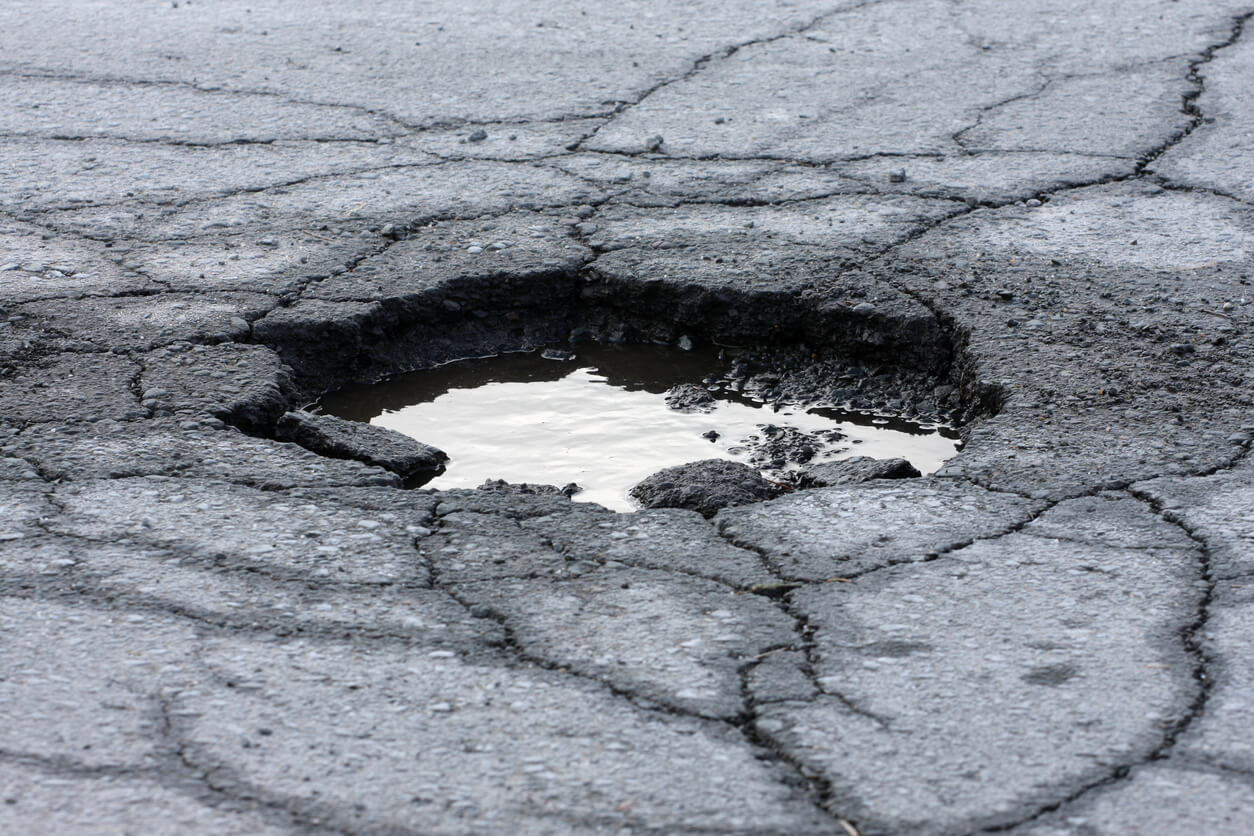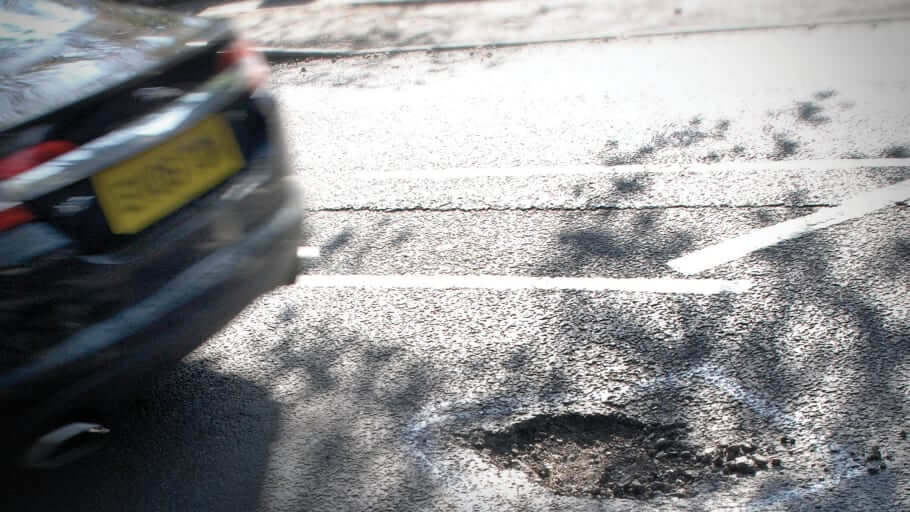Government road repair data suggests that just 3% of England’s 183,054-mile council-run road network received any form of road maintenance in the past financial year.
Analysis by the RAC shows that in total, 4,894 miles of all road types were strengthened, resurfaced or preserved in 2023/24, representing an 18% increase (750 miles) in maintenance work compared to the year before (2022/23) when 4,144 miles of roads were improved.
However, that is way below the 7,510 miles of roads maintained in 2017/18 – some 2,616 more miles than in 2023/24 (4,894 miles), representing a 35% decline.
Looking at the proportion of A roads maintained by councils that received any form of maintenance, just 5% were strengthened, resurfaced or preserved in the last financial year, says the RAC.
This accounts for 817 of the country’s 17,860 miles of A roads, down by a third (33%) from the 1,222 maintained six years before.
The percentage of minor roads is even smaller – just 2% (4,080 miles) of the 165,195 miles of minor roads in England were strengthened, resurfaced or given life-extending preservation treatment in the last 2023/24 financial year.
Furthermore, half (50%) of England’s 152 councils did not complete any vital preservation work to prevent potholes forming on major A roads in 2023/2024.
Preventative treatments, such as preservation, rejuvenation, surface dressing and micro surfacing, stop cracking and seal roads from the damaging ingress of water, helping to avoid the need for more costly resurfacing.
More than a third (36%) of local authorities failed to complete any work of this kind on B, C and unclassified roads – a considerably smaller proportion than six years ago when only 28% of authorities (43) didn’t use preventative treatments on these routes.
However, among the councils that did carry out preservation work, the data shows a 23% increase in the number of miles treated – 3,309 miles in 2023/24, compared to just 2,698 the year before.
Most of this increase was driven by more preservation treatments being used on minor roads (up 26%, vs just 4% more on A roads compared to 2022/23).
Some 11% of councils (16 authorities) didn’t resurface any A roads in 2023/24, while 7% (10 authorities) failed to resurface any minor roads.
In total, councils in England resurfaced 1,242 miles of their entire road networks, a 2% increase on the 1,223 the year before.
Regionally, Gloucestershire County Council knocked Kent off the top spot for the highest number of resurfaced miles on A roads: 24 miles of its 337 mile-network (7%), double the amount (12 miles) it completed last year.
For the second year in a row, Staffordshire completed the greatest amount of preservation work – 9%, equating to 37 of its 411 miles of A roads – exactly the same proportion as last year.
In the south east, Surrey took the title for the most minor roads resurfaced by replacing 50 miles of its 2,958-mile network (only 2%).
For two years running, Norfolk carried out the most preservation work treating 5% of its 5,586 B, C and U roads, equating to 302 miles.
The RAC’s research follows the Government’s funding allocation of £1.6 billion for councils to fix potholes – the biggest one-off road maintenance settlement councils in England have ever received.
RAC head of policy, Simon Williams, said: “As the Government has just given councils a record amount of funding to look after their roads, we hope to see a significant improvement in the quality of road surfaces due to the extra maintenance they will be able to carry out in the next 12 months.
“We encourage local authorities to focus on permanent solutions rather than trying to patch pothole-ridden roads that are beyond saving.
“This might include resurfacing or alternatives such as recycling existing materials in-situ. Surface dressing roads in better condition is also important as it ensures they stay that way for longer.
“The longer important preservation work, such as surface dressing, is neglected, the more the pothole problem prevails.
“With a third of councils failing to carry out any such work, it’s no surprise that RAC pothole-related breakdowns jumped by a fifth in the final three months of 2024.
“We strongly hope the next set of figures will show we’ve finally turned a corner towards smoother, safer, better roads.”
Road Haulage Association (RHA) policy lead, James Barwise, wants to see local authorities equipped with the latest training and technology for longer lasting and more cost-effective road maintenance.
“This analysis and these figures highlight the temporary nature of repairs happening across the country,” he added.
“Earlier this year, we called on local authorities to allocate and ring-fence pothole funding for long-term and permanent fixes. Today we repeat this call.
“We welcome recent assurances from the Government recognising the issue, but it's clear that much more needs to be done, faster to deliver a road network fit for a modern economy, and one which drivers deserve."
For the first time, every council in England must now publish how many potholes they have filled or face losing cash.
The Government says that to qualify for the full amount of funding, all councils in England must from today publish annual progress reports and prove public confidence in their work.
Local authorities who fail to meet these conditions will see 25% of the uplift (£125m in total) withheld.
UK pothole capitals revealed
In separate research, Blackcircles sent Freedom of Information (FOI) requests to local authorities across the UK to reveal the areas with the most reported potholes over the past five years, the number of potholes repaired each year and the total annual cost of pothole repairs.
It also surveyed 2,000 people as part of their research, to determine what impact potholes have on UK motorists.
Newcastle came out on top as the UK’s pothole capital, according to the Blackcircles research, with 3,274 potholes were recorded in the northeast city across its 1,016 kilometres of roads in 2024.
When comparing this figure to 2020, the number of potholes in Newcastle has increased by over three-quarters (88%).
While the city came out on top for the number of reported postholes last year, it is also the city that repaired the most potholes. Across the city, 3,001 potholes were repaired per 100 kilometres of road.
Aberdeen, meanwhile, has been named the pothole capital of Scotland, recording the second-highest number of potholes in 2024, with 1,958 per 100 kilometres of road.
Between 2020 and 2024, the number of potholes in Aberdeen increased by over a third (35%).

When looking at the cities where the most potholes were repaired, Aberdeen takes third place, with 1,323 potholes repaired per 100 kilometres of road in 2024.
Finally, Cardiff beats other Welsh locations to be named Wales’ pothole capital.
Despite the number of potholes in Cardiff rising by less than a tenth (5%) between 2020 and 2024, the Welsh capital finished third in the pothole ranklings overall.
Last year, 1,574 potholes were recorded per 100 kilometres of road in Cardiff, while the capital had the second-highest number of potholes repaired at 1,588 per 100 kilometres.
The survey revealed that almost six in 10 (57%) Belfast residents have had potholes damage their vehicles, while Liverpool and Sheffield have the slowest road repair rates.
Further findings also revealed that over the past five years, Bexley has seen the biggest increase in potholes across the local area.
The number of potholes in the London borough quadrupled (400%) from 442 to 2,184, despite a brief drop in 2022, where only 392 potholes were recorded.
The London borough of Croydon spent the most on pothole repairs in 2024. Across the 12 months, £517,746 was spent on pothole repairs per 100 kilometres of road, which is equivalent to £5,177 per kilometre.
Average pothole payout
In 2023, the average payout for pothole-related claims in Hertfordshire totalled £367, which is higher than any other area in the study.
Ceredigion recorded 8.2 collisions per 100,000 people as a result of pothole-related accidents, which was the highest in the UK.
James Harding, from Blackcircles, said: “Our latest research has uncovered the worst-hit areas of the UK for potholes and Newcastle comes out on top.
“The northwest city reported 3,275 potholes per 100 kilometres of road and our survey revealed that a third of local motorists have suffered damage to their vehicle at least once due to the city’s potholes.
“As well as being a nuisance to motorists around the country, potholes are also putting a financial strain on local councils.
“The findings from our report revealed that Croydon was the area of the UK where the highest amount was spent repairing potholes, at over £500,000 per 100 kilometres of road.
“When combining the total cost spent on pothole repairs across the top 10 local authorities in our research, over £2.2 million has been spent, further highlighting the impact the quality of UK roads has on the country’s finances.”





















Login to comment
Comments
No comments have been made yet.